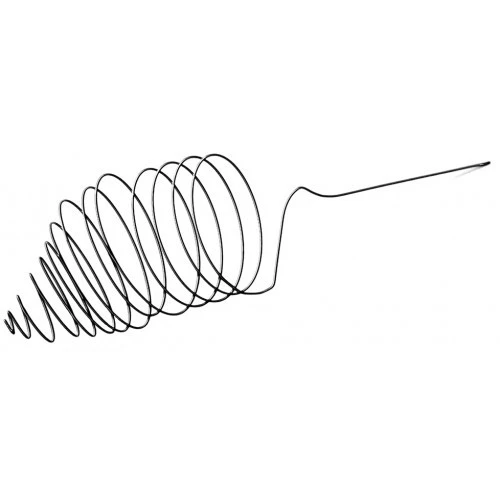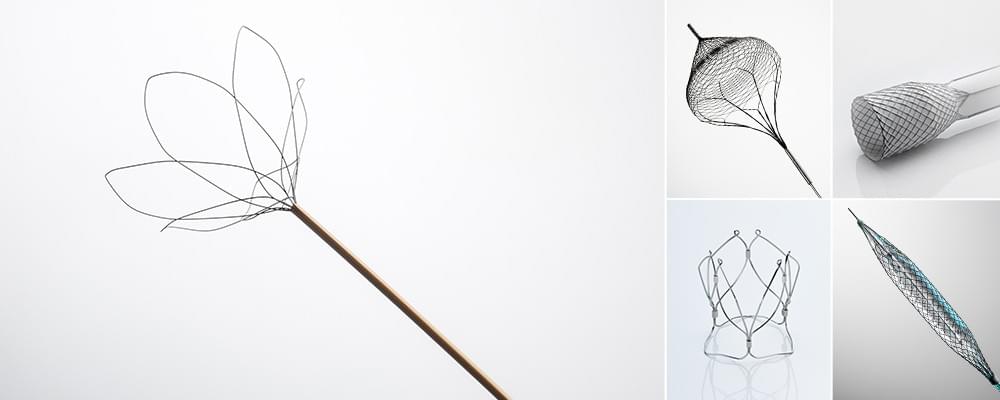Introduction

In the ever-evolving landscape of medical technology, guide wire technology has become a crucial component in various procedures. One of the most groundbreaking innovations in this field is the development of nitinol guidewire technology. This revolutionary material, known for its unique shape memory properties, has transformed the way medical devices are designed and utilized.
Understanding Nitinol and Its Unique Characteristics
Nitinol, a nickel-titanium alloy, exhibits remarkable flexibility and resilience, making it an ideal choice for guide wire technology. Its ability to return to its original shape after being deformed allows for precise navigation through intricate pathways within the body, enhancing the accuracy and safety of medical procedures.
Nitinol's unique properties also make it an excellent material for stents, as it can expand and contract with the body's natural movements without losing its structural integrity. This allows for improved comfort and reduced risk of complications for patients undergoing stent placement procedures. Additionally, Nitinol's biocompatibility makes it well-suited for long-term implantation within the body, providing a reliable and durable solution for various medical applications. Its versatility and reliability have positioned Nitinol as a valuable resource in the field of medical device technology.
Exploring the Applications of Nitinol Guidewire Technology
The applications of nitinol guidewire technology span across various medical specialties, including cardiology, endovascular surgery, and neurology. Its versatility and adaptability have made it an indispensable tool for healthcare professionals seeking to improve patient outcomes and overall procedural efficiency.
Nitinol guidewire technology stands out due to its exceptional flexibility and shape memory, allowing it to navigate through tortuous vascular pathways with ease. This feature is particularly beneficial in cardiology and endovascular surgery, where precise navigation is crucial for successful procedures. Additionally, nitinol guidewires are known for their kink resistance, reducing the risk of procedural complications and ensuring a smoother workflow for healthcare professionals.
What Makes Nitinol Guidewire Technology Stand Out
What sets nitinol guidewire technology apart from traditional materials is its unmatched combination of flexibility and durability. The use of NiTi guide wire in medical procedures offers enhanced maneuverability and precision, ultimately leading to improved patient comfort and safety throughout the treatment process.
Nitinol, a unique alloy of nickel and titanium, exhibits shape memory and superelasticity properties, allowing the guidewire to return to its original shape even after being bent or deformed during medical procedures. This remarkable characteristic ensures that the wire maintains its integrity and functionality throughout the entire process, reducing the risk of breakage or kinking. As a result, healthcare professionals can navigate through complex anatomical structures with ease, providing patients with a higher level of care and precision.
The Science Behind Nitinol

Nitinol is a unique alloy composed of nickel and titanium, known for its shape memory and superelastic properties. With its ability to return to a predetermined shape when heated, Nitinol is the key material used in guide wire technology, allowing for precise navigation through the body's intricate pathways. Its superelasticity also provides durability and flexibility, making it ideal for medical devices.
The Composition and Properties of Nitinol
Nitinol is made up of nearly equal parts nickel and titanium, giving it its distinct properties. This composition allows Nitinol to exhibit shape memory, meaning it can remember its original shape and return to it when heated. Additionally, it possesses superelasticity, enabling it to withstand deformation without permanent damage. These unique properties make Nitinol an ideal material for guide wire technology in medical applications.
Nitinol's unique properties have revolutionized the field of medical technology, particularly in the development of guide wire technology. The shape memory and superelasticity of Nitinol allow for guide wires to be inserted into the body in a deformed state and then return to their original shape once they reach their target location. This capability reduces the risk of tissue damage and makes procedures less invasive for patients, leading to quicker recovery times and improved outcomes.
The Role of Shape Memory Alloys in Nitinol Guidewire Technology
Shape memory alloys play a crucial role in Nitinol guidewire technology by allowing the wire to flex and bend without losing its original shape. This enables physicians to navigate through complex blood vessels with precision while maintaining control over the guidewire's movements. The ability of Nitinol to revert back to its original form after being deformed ensures that the guidewire can be easily retracted from the body without causing harm.
How Nitinol Enhances Flexibility and Durability in Medical Devices
Nitinol's flexibility and durability are essential attributes that enhance the performance of medical devices utilizing this material. In guide wire technology, these characteristics enable smooth navigation through tortuous anatomical structures while withstanding external forces during insertion or removal procedures. This results in improved patient comfort and safety during medical interventions. Furthermore, Nitinol's unique shape memory properties allow the guide wire to return to its original shape after being bent or deformed, ensuring consistent performance throughout the procedure. This reliability is crucial in delicate medical procedures where precision is paramount.
Advantages of Nitinol Guidewire Technology

Enhanced Navigation and Maneuverability
Nitinol guidewire technology offers enhanced navigation and maneuverability during medical procedures, allowing for precise placement and movement within the body. This is achieved through the unique flexibility and shape memory properties of Nitinol, which enable the guidewire to adapt to the anatomy of the patient, ensuring accurate guidance through complex pathways.
Improved Patient Comfort and Safety
Compared to traditional guidewire technology, Nitinol guidewires provide improved patient comfort and safety due to their reduced risk of causing tissue damage or injury during insertion and navigation. The smooth surface and advanced design of NiTi guide wire minimize friction with blood vessels, resulting in a gentler experience for patients undergoing medical procedures.
Compatibility with Various Medical Procedures
Nitinol guidewires are highly versatile and compatible with a wide range of medical procedures across different specialties such as cardiology, endovascular surgery, neurology, and more. This makes them an essential tool for healthcare professionals seeking reliable guidance and support in delivering optimal patient care.
Comparison with Traditional Guidewire Technology

Understanding the Key Differences
When comparing traditional guidewire technology with nitinol guidewire technology, one of the key differences lies in the material used. Traditional guidewires are typically made of stainless steel or other metals, whereas nitinol guidewires are made from a unique nickel-titanium alloy known for its shape memory and superelasticity. This gives nitinol guidewires the ability to return to their original shape after being deformed, providing greater flexibility and durability during medical procedures.
Impact on Medical Procedure Outcomes
The impact of using nitinol guidewire technology on medical procedure outcomes is significant. The flexibility and shape memory properties of nitinol allow for enhanced navigation and maneuverability within the body, leading to more precise and successful medical procedures. Additionally, the improved patient comfort and safety provided by nitinol guidewires contribute to better overall outcomes for patients undergoing various medical treatments.
Why Nitinol Guidewire Technology is Gaining Popularity
Nitinol guidewire technology is gaining popularity due to its superior performance compared to traditional guidewire technology. The unique properties of nitinol, such as its flexibility, durability, and shape memory capabilities, make it an attractive choice for medical professionals seeking advanced tools for complex procedures. As a result, there is a growing demand for nitinol guidewires across different medical specialties.
Applications in Medical Devices

NiTi Guide Wire in Cardiology
Nitinol guide wire technology is revolutionizing cardiology procedures by providing enhanced flexibility and maneuverability for navigating through complex arterial pathways. The unique properties of Nitinol allow for precise control and support during cardiac interventions, leading to improved patient outcomes and reduced procedure times.
Guide Wire Medical Use in Endovascular Surgery
In endovascular surgery, guide wire technology plays a crucial role in guiding catheters through blood vessels to access the affected area. Nitinol guide wires are particularly advantageous in this field due to their shape memory properties, allowing for easy navigation through tortuous vessels and ensuring optimal placement of medical devices for effective treatment.
NT0401 Nitinol Wire & Nitinol Rod in Neurology
Nitinol wires and rods are also utilized in neurology for their exceptional flexibility and durability, making them ideal for navigating delicate brain structures during neurosurgical procedures. The use of NT0401 Nitinol wire has significantly improved the precision and safety of neurovascular interventions, leading to better patient outcomes and recovery.
Future Innovations and Developments

Potential for Advancements in Medical Technology
As technology continues to advance, the potential for innovations in medical devices, including guide wire technology, is immense. With ongoing research and development, there is a growing focus on enhancing the precision, flexibility, and safety of medical procedures through the use of advanced materials like nitinol.
Ongoing Research and Clinical Trials
Numerous research studies and clinical trials are underway to further explore the capabilities of nitinol guidewire technology. These trials aim to evaluate its effectiveness in various medical applications, such as cardiology, endovascular surgery, and neurology. The findings from these studies will undoubtedly shape the future of medical devices and patient care.
How GEE SMA is Shaping the Future of Nitinol Guidewire Technology
GEE SMA (Shape Memory Alloys) plays a pivotal role in shaping the future of nitinol guidewire technology. By leveraging advanced manufacturing techniques and material science expertise, GEE SMA is at the forefront of developing next-generation nitinol wires and rods that offer unparalleled performance in medical settings.
Conclusion

Nitinol guidewire technology has revolutionized modern healthcare with its unparalleled flexibility and durability, making it a game-changer in medical procedures. As a result, healthcare providers are increasingly harnessing the potential of NiTi guide wire to enhance patient care and safety, setting new standards for medical device innovation.
The Growing Significance of Nitinol Guidewire Technology in Modern Healthcare
The growing significance of nitinol guidewire technology in modern healthcare is undeniable. With its unique composition and shape memory properties, nitinol has become the go-to material for guide wire technology in various medical procedures. Its ability to navigate through complex anatomical structures with ease and precision has led to improved patient outcomes and enhanced procedural success rates.
The flexibility of nitinol guidewires allows for easier navigation through tortuous vessels, reducing the risk of vessel damage and improving overall patient safety. Additionally, the shape memory properties of nitinol enable the wire to return to its original shape after being bent or kinked, ensuring consistent performance throughout the procedure. This reliability is crucial for healthcare providers and patients alike, as it minimizes the need for additional interventions or corrective measures.
Harnessing the Potential of NiTi Guide Wire for Enhanced Patient Care
Healthcare professionals are now harnessing the potential of NiTi guide wire to provide enhanced patient care across a wide range of medical specialties. From cardiology to neurology, the use of NT0401 nitinol wire & nitinol rod has revolutionized the way medical devices are designed and utilized, ultimately leading to better patient comfort and safety during procedures.
The flexibility and shape memory of NiTi guide wires have allowed for more precise navigation through the body's intricate pathways, reducing the risk of complications during procedures. This has led to improved outcomes for patients undergoing minimally invasive surgeries or complex interventions, as healthcare professionals can now access hard-to-reach areas with greater ease and accuracy. Additionally, the durability of NT0401 nitinol wire & nitinol rod ensures that these medical devices can withstand the demands of various medical procedures, contributing to their reliability in clinical settings.
The Role of GEE SMA in Advancing Nitinol Functional Materials
GEE SMA plays a pivotal role in advancing nitinol functional materials, driving innovation and development in the field of guide wire technology. Ongoing research and clinical trials are paving the way for future advancements that will further improve the performance and versatility of nitinol guidewires, ultimately shaping the future of medical technology.
GEE SMA's commitment to research and development in nitinol functional materials has led to the creation of cutting-edge technologies that are revolutionizing the medical field. By constantly pushing the boundaries of what is possible with nitinol, GEE SMA is driving innovation and setting new standards for guide wire technology. As a result, medical professionals are able to perform procedures with greater precision and efficiency, ultimately improving patient outcomes and quality of care.

